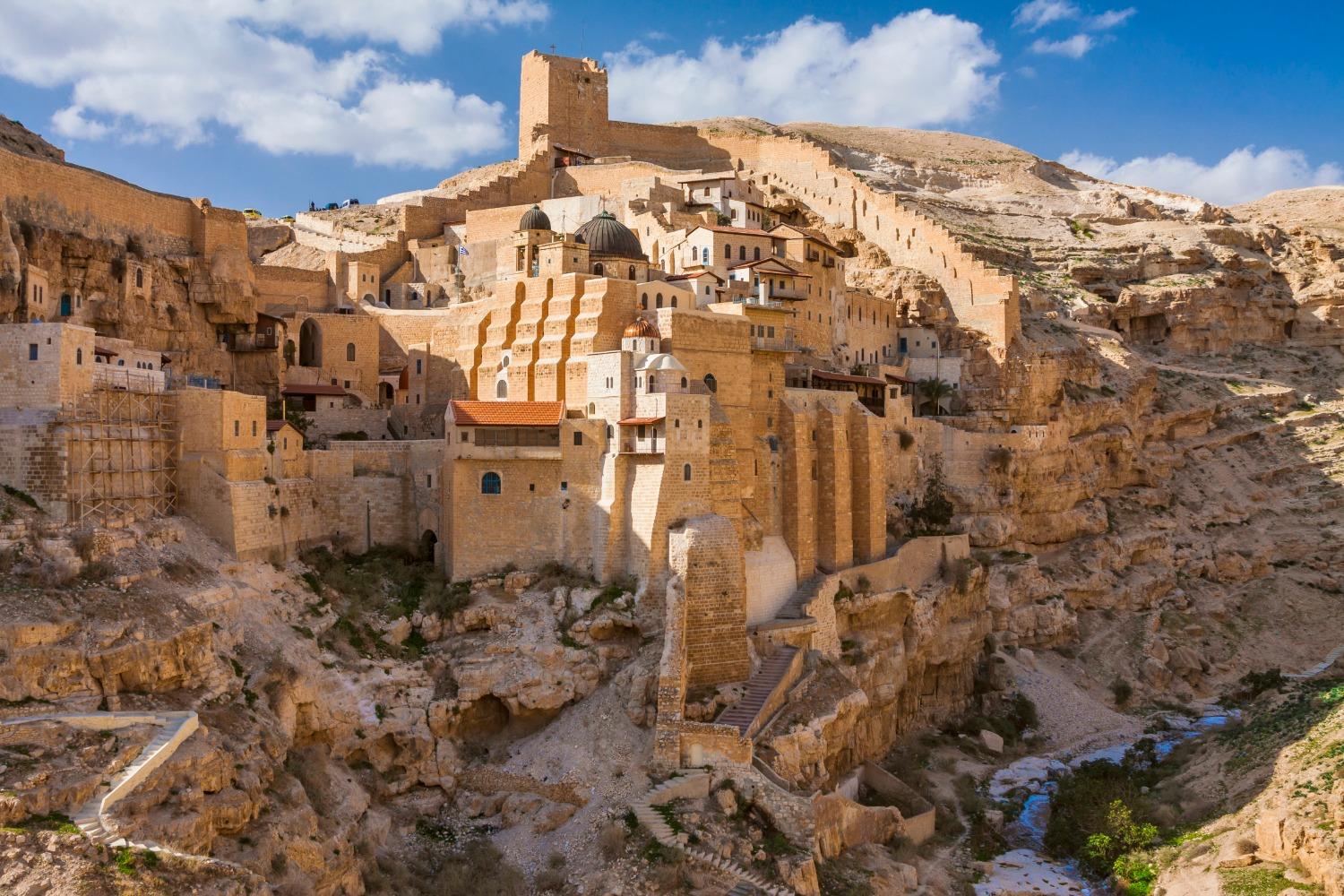
If you travel to Jerusalem you will find a valley called Kidron that runs east of the Old City and separates the Temple Mount from the Mount of Olives. The valley continues its course down into the Judean desert and runs east and south until it ends in the Dead Sea. About halfway along its course to the sea you will come upon a remarkable assemblage of buildings that seem to have been carved out of the rock overlooking the valley. You have arrived at one of the most notable monasteries in the world, the Great Laura of Mar Saba. It was founded in AD 483 and has been inhabited ever since. It has been the home of many saints and theologians, and has played an often important role in Church history.
St. Sabbas was among the many young men who fled to the desert in the early days of monasticism to seek God in purity of heart and to fight against demons through prayer and asceticism. St. Anthony of the Desert had sparked the monastic movement by his life in the desert of Egypt. Many others followed him into the deserts of Egypt, Syria, and Judea.
The desert of Judea was a place rich with spiritual significance. Not far away was the ancient settlement of Qumran, the Essenic community associated with the Dead Sea scrolls. King David had wandered here in his flight from Saul, and John the Baptist did his preaching and baptizing from this desert area. St. Sabbas chose to live among the caves above the Kidron valley, and as news of his holiness spread, many others were inspired to join him. In the year 483, he gathered roughly 70 monks together in a monastic settlement and wrote a rule of life for them. There St. Sabbas and his spiritual descendants have lived, through thick and thin, up to our own time.
St. Sabbas had raised a powerful voice in the battle against the Monophysite heresy, and from that point on his monastery became a bastion of orthodoxy and a source of spiritual life whose influence was felt not only in the Jerusalem Patriarchate, but far beyond into all areas of the Eastern Church. Among the many saints and theologians who resided at Mar Saba was St. John Damascene (675-749). St. John’s influence was decisive in the fierce battle against the Iconoclasts, and his Exposition of the Orthodox Faith has become a classic of theology in both East and West. Mar Saba was also highly influential in the liturgical practices of the eastern communions. The order of their liturgy, or typicon, became the standard for much of the orthodox world.
Like all things genuinely Christian, the monastery of Mar Saba, though a haven of prayer and peace, has been no stranger to conflict and controversy. During its long and eventful history the monastery has been under the rule of the Byzantine empire, the Persians, various Islamic Caliphates, and the Crusader Kingdom of Jerusalem. It has seen periods of great flourishing when as many as 300 monks lived in its enclosure and periods of neglect when the monastery has all but disappeared. Its monks have been martyred by Persians and by Bedouins, and the monastery has been at the center of controversies between contending Orthodox patriarchates. In recent years its 20 monks have been under pressure from zealous Israeli settlers who have vandalized the monastery and disrupted the celebrations of major feast days. It is an island of Christianity in a sea of hostile forces; and yet it stands, and its monks continue to lift their prayers to the God who has sustained them through all their trials. Mar Saba is a living symbol of the hidden potency of the Gospel as it witnesses to the life of heaven on its way through the world.

The First Draught
To receive the Weekly Update in your inbox every week, along with our weekly Lectio Brevis providing insights into upcoming Mass readings, subscribe to The First Draught.